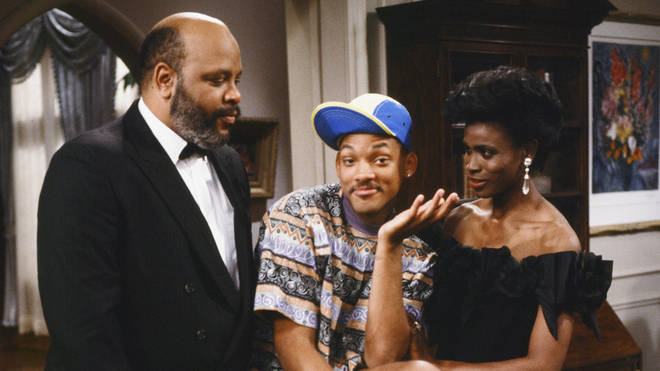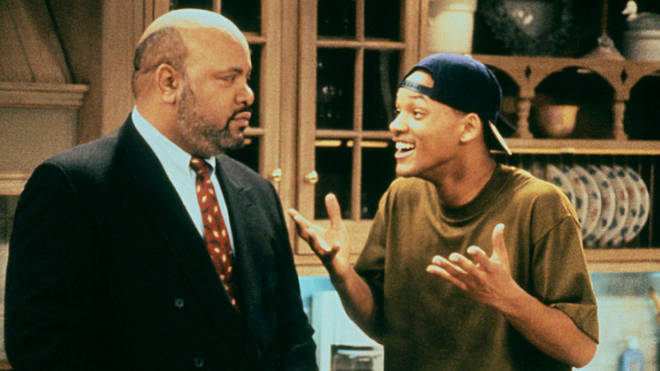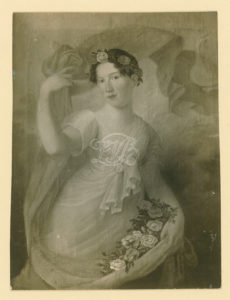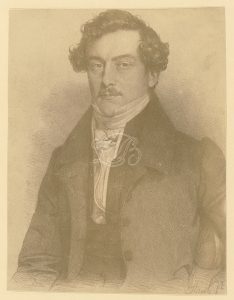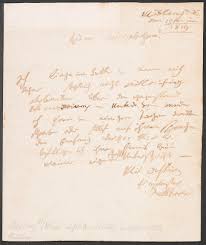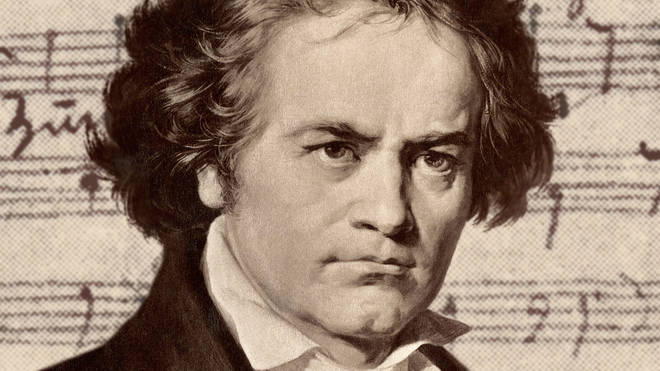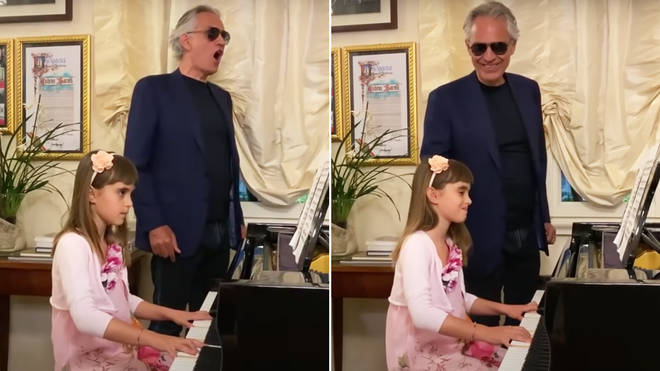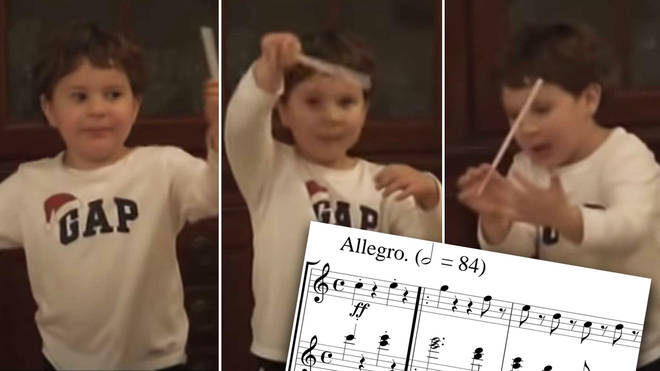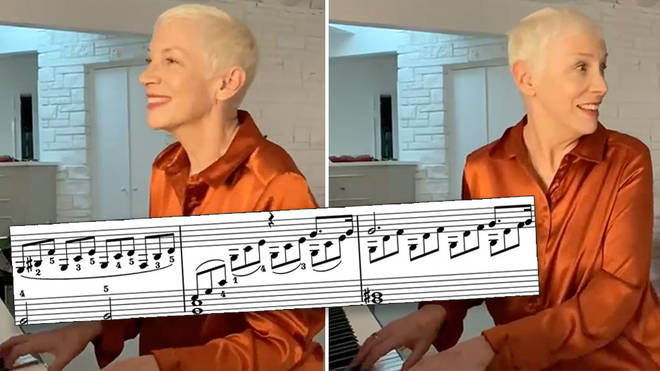Liceo Cagayan de Oro City
This
day 250 years back, Beethoven was baptized in Bonn. Why baptized? Because at
that time there was no registration or paper works but we know the archives of
Remigius Church that Beethoven was baptized, until this day. Usually at that
time, children were baptized one or two days after they were born.
Now,
I think for the younger generation and for those who never visited Europe, for
those who only experienced hot weather like in the Philippines, let’s imagine
how it was like in 1770, December in Bonn, Germany. For sure it’s very cold,
because December, January, and February are the cold months of the year and
that also means there’s a lot of snow, probably. In that time there’s no
electricity, no gas or oil heating, so life at that time was hard. It’s also
the reason why many new babies, unfortunately, didn’t survive directly after
they were born. And you could imagine Beethoven was born at that age where
electricity wasn’t yet discovered.
Ludwig’s Parents
His parents, Johann van Beethoven and Maria
Magdalena Kevenich, were the second-generation people in Bonn because
the first generation was Beethoven’s grandfather, same name like Ludwig. So, Ludwig
van Beethoven, the grandfather, he was the music director
of the Orchestra and Choir in Bonn, and Johann van Beethoven is
also part of the two groups, he was hired as a Tenor for the Choir and Violin
player for the Orchestra. He married 3 years before Beethoven was born to Maria
Magdalena Kevenich.
Beethoven’s
Geburtshaus
Let’s have a look at Beethoven’s Birthplace. This is the house, the
right side of the house, where the family of Beethoven was living at that time.
This picture is quite old. Nowadays, the front house or the big house on the
left side is also part of Beethoven’s House in the museum.
The
birthplace or the room, in which Beethoven was born, is this small bedroom in
the upper floor. This is the picture of Beethoven’s room by the museum,
unfortunately, all the furniture in the room is not present.
This is what the
house looks like to this day and it’s filled with instruments, letters, and loads
of Beethoven’s Documents in his time. There is even a digital archive of
Beethoven’s work and also archives of his original works and documents but
unfortunately the originals are kept safe and not to be viewed. It was
purposely placed that way to maintain it’s form for historical purposes. This
is the second house where Beethoven lived in Vienna, which is the second part
of this life. It is only a small museum. The documents, notes, and originals in
that museum were transferred to Bonn for the main museum to have.
You
can see official date of Beethoven’s birthday in the plaque at the front of his
house. To this day the house is still maintained and behind those windows are
the instruments of which were owned by Beethoven and the on right side is the
entrance of the museum.
Yes!
Some years ago, me and Rudolf were visiting together the museum in Bonn.
Family Tree
This
upper line are the great grandparents of Ludwig Van Beethoven, marked orange.
The second line are the grandparents, third line is the parents, and the lower
line on the left, marked red, is Ludwig Van Beethoven and his two only brothers
who survived until adolescence because in that time many of the siblings died
when they were very young.
Chamber music hall of
the Beethoven-Haus built in 1989
To this day, there is the Herrmann-Abs-Kammermusik-Saal in the neighbor
house of Beethoven birthplace, which was bought by the museum and it was built
in 1989. This wonderful chamber music hall has only 99 seats but wonderful
acoustics. The chamber music hall also held many concerts with famous musicians
not only just pianist but also string quartets.
Beethoven Monument in
Bonn
In
Bonn, the post office, is the building from the time of Beethoven. Around about
20 years after he died the people built a monument in his honor. There’s a
festival which take place every year in Bonn called Beethoven-Fest. The sad
thing about this is that normally as we are now celebrating 250 years of the
birth of Ludwig Van Beethoven there would be worldwide concerts with all of his
pieces, unfortunately because of COVID 19, concerts are no longer possible at
the moment, even this lecture is not possible to be held with an audience but I’m
hoping that next year this pandemic will soon pass and if that be to happen, we
can have all the concerts scheduled and the whole world will be sounding
“Beethoven”.
Ludwig around age of
10
Ludwig around of age of 10, the painter is unknown, but the reason that
there is already a painting means that he was a not normal child or an unknown
child like all other children in Bonn. His talent for music was discovered
quite early, not so early like the famous composer Wolfgang Amadeus
Mozart, but like Mozart, Ludwig’s first teacher was his father
and his second teacher
was Christian Gottlob Neefe who taught him
composition, counterpoint, was also his piano teacher. And at the age of 11 he
had his first concert, which is quite successful, and the critics were praising
his talents and the power he had when he performed on stage. His piece was the “Well tempered Klavier” by
Johann Sebastian Bach. Unfortunately, at that time Bach wasn’t
really that famous anymore because he was no longer modern. But to discover
Beethoven’s talents in that successful concert was amazing.
Beethoven around 1790
before he moved to Vienna
This
gave Ludwig Van Beethoven an opportunity that the elector of Cologne decided to
sponsor Beethoven to travel to Vienna, at that time Vienna was the world
capital for music and known for it’s famous composers like Joseph Haydn,
Wolfgang Amadeus Mozart, Antonio Salieri, and so
forth. In 1785, Ludwig Van Beethoven had his first travel to Vienna, which it
was sponsored and including the lessons that which he should have with Wolfgang
Amadeus Mozart, which was the very famous at the time. Nowadays we
don’t know if the two composers actually met. Beethoven was still at the
beginning of his career and he composed piano sonatas, which is still famous
because the cycle of 32 piano sonatas by Beethoven. It’s called under the view
of positions that musical logs that’s the new testament for piano. “The Old
Testament” for piano is the “The Well-Tempered Klavier” by Johann Sebastian
Bach.
Beethoven
was for sure very excited to see Vienna and to meet Wolfgang Amadeus Mozart.
But unfortunately, they didn’t meet or maybe Beethoven saw one performance of
Mozart and was too shy to approach. All in all, it was not proven because I
think if the two have met and if Beethoven would have been the student of
Wolfgang Amadeus Mozart for sure there would be some documents. Mozart use to
write letters almost every day to his father and other persons, basically it’s
like a diary, but never did he mention the name Ludwig Van Beethoven and as we
know the big talent of Ludwig Van Beethoven, if Wolfgang Amadeus Mozart
would have heard him played or one of his compositions for sure he would have
mention him. On the other side, Ludwig Van Beethoven never mentions that he had
lessons with Mozart but he had lessons with Joseph Haydn and Antonio Salieri. Joseph
Haydn was a composer who developed the beginning of the Classical
Period, the Symphony. Mozart was also a big fan or inspired to compose
symphonies, so, Wolfgang Amadeus Mozart composed 41 Symphonies, Joseph
Haydn about 108, and Ludwig Van Beethoven composed 9 Symphonies. I’ll
tell later what’s the difference. Beethoven was very thankful for everything he
learned from Joseph Haydn about Symphonies and to Antonio
Salieri about how to handle the voices and composing some operas.
Ludwig van Beethoven
portrait by Joseph Willibrord Mahler 1804/05
Here we have a portrait of Ludwig van Beethoven created by Joseph
Willibrord Mahler in 1804-1805. At that time Ludwig van Beethoven was already
famous in Vienna because his second travel and definitely moving to Vienna was
1792. So, he decided to stay in Vienna and not go back to Bonn. The reason is
that his mother died and for that he got no reason to go back because,
unfortunately, his father has some big problems and was always drunk, lost his
job too. But I think the main reason is that, rumors were going around that the
French army will occupy this part of Germany, where Bonn and Cologne located.
And that’s also the reason his brothers followed him to Vienna and lived there.
Unfortunately, Vienna, at that time was also affected by the war.
We
know that sometimes Beethoven hides in the cellar of his brother Johann’s House
because there was some bombing. It wasn’t airplanes of course but canons.
Airplanes at that time weren’t invented yet. This might be also the reason why
Beethoven’s music is different than Mozart and Haydn’s, for them haven’t been
able to experience war and the political situation. So, Beethoven’s music is
counted as “Heroic” like his Symphony number 3 which is called “Eroica” but his
dedication was first to Bonaparte. Bonaparte is the last name the famous
emperor of France, Napoleon Bonaparte. Who was part of the leaders of the
revolution of France but then later he declared himself as Emperor and he
finished the first republic of France. Build an Empire. And that was reason why
Beethoven scratched the name Bonaparte and said “this symphony is in memory of
a great hero”.
Ludwig Van Beethoven
at the age of 45
Ludwig Van Beethoven, living since 1792 in Vienna, some years later
already becoming famous, premieres many works especially piano works, string
quartets, Symphonies, Piano Concerti (which means piano with Orchestra), and he
earned a lot of money. There are some documents of commissioned works and there
was one commissioned work where he got so much money that he could live one year
and pay all expenses. Now imagine that every year he’s composing many works and
by that he was a quite a rich composer at that time.
1808,
he premiered one of his symphonies, which marks a big change in how Symphonies
are composed. In general, I have to say that Ludwig van Beethoven’s works were
huge compared to the works that are composed in the Classical Period. The
Length of the Symphony was already doubled as the people were used to it
before. The critics always said that even the work is too long, because this
was part of the critic, the ideas and inspirations of this young composer is so
big that it’s capturing their ears. You have to imagine that it’s not only the
size of the works or how long it is but in every music is like a drama, the
format needs to be constructed in that way so that the people don’t get bored.
And now this Symphony No. 5, which is very special, and I think it’s one of the
most famous pieces of all times.
(played the first four notes)
These
four notes, I think everyone knows.When we think of how melodies are built and
how Symphonies, the melodies are the subject. Usually it’s like this, it starts
with the first note and then it’s in a direction to move forward, now, in this
case Beethoven is doing something very special, he stop on the fourth note and
marked it with a fermata, which is to hold a note more than it’s value, now
what can we do after this? Normally you have the hold then it’s very hard to continue
after this and so Beethoven is creating a suspense.
(played the whole famous two-part
four notes)
Now,
what Beethoven’s doing is repeating these four notes, okay the second one is in
the other step, but then again, a hold but longer one. So, let’s say the view
of a musician or a composer or even the audience in that time when there was
the premiere. I could imagine that they were shocked because the first
appearance of these four notes with a hold, maybe they can imagine “okay so
this is like a wake up and now the Symphony will start”. So, Beethoven is
repeating this and the longer hold which makes the confusion complete and so the audience in the premiere, I think
they were between Joyful, sadness, and all the emotion because they were
probably expecting something different. Now, the genius Beethoven showed how a
very long Symphony, which is almost one hour with four movements, can be
created of these little seats of four notes.
The
following Symphony, the Symphony No. 6, which is we call in music like a program
music. The very famous program music was create earlier in the Baroque period
by Antonio Vivaldi, who composed the “Four Seasons” and as the title say there
is the musical description of every season, there are lot of describing moments
like the Viola is playing like a barking dog, things like these, describing
something you see through music, is called program music. The Symphony No. 6,
Beethoven was quite sure that the people will see this as program music but he
said “No it’s not program music, it’s more than painting” because in the
Symphony No. 6, the pastoral, he’s describing a journey or a trip to villages
outside of Vienna with the mountains in the background. The Symphony No. 7 and
8 were also again growing in size and this is why I said it before, Joseph
Haydn composed a bigger number of Symphonies because Symphonies were shorter.
Mozart’s Symphonies in the end were longer. But the dimensions of Ludwig Van
Beethoven Symphonies when we count the minutes of all 9 symphonies together,
it’ll be more than the 41 Symphonies of Mozart’s, so that’s the reason why the
total number of Symphonies is small even Ludwig Van Beethoven compared to
Wolfgang Amadeus Mozart was lucky to live longer, unfortunately Wolfgang
Amadeus Mozart died early. The Symphony No. 7 by Beethoven has very famous 2nd
movement. In Classical Symphony usually the 2nd movement is a slow
movement and this is a very special one because it’s a Funeral March. The
Symphony No. 8, the 2nd movement is dedicated to Mälzel.
Mälzel was the one who invented the metronome. For those who are not
musicians, it’s like a clock and you can choose which speed you want to play
with the music and it’ll give you a ticking sound which is “Tik-tok-tik-tok”.
For the first time in music history it was possible that a composer dedicates
exactly how fast or slow his composition should be performed. The 2nd
of this Symphony is inspired by Mälzel and Beethoven to show up
in music what it is about, made it like this, the wind instruments will play
equal notes almost the whole movement and on top of this is the strings they’ll
have the melodies.
Ludwig Van Beethoven
1823 at the age of 53

Then the final finished Symphony is the Symphony number 9. There were a
lot of sketches of the following Symphony number 10 but unfortunately Beethoven
died and he could not finish the Symphony No. 10. The finished one is the No. 9
which is again, a milestone in Music History because he introduces the Symphony
which is the work for the Symphony Orchestra, he introduces the Choir and Vocal
Soloists, in the last movement No. 4 the famous “Ode to Joy”, the lyrics are by
Friedrich Schiller, and it’s pressing the wish of Beethoven like many people at
that time were wishing that all people were equal and no one is the king and
others slaves or so. It’s a very new view of society but in that time, it was a
revolution and was described in music.
Let me go back a little bit because I think almost everyone knows that Beethoven
was a deaf in the end of his life. This is a very big problem for a musician in
general, for a composer, a conductor, and the problems that he was loosing
hearing started around 1800 which means after he arrived in Vienna, he started
loosing his hearing and in 1802 he wrote a testament which is now known as “Heiligenstädter
Testament”.

He wrote it to his brothers, it’s a very touching document
because Beethoven was not only loosing his potential to hear but also had many
illness so he had the impression that he will die and that’s why he wrote this
testament. He is expressing what he was really feeling and all his emotions and
he was even mentioning committing suicide but the art or his art is the only
thing keeping him alive because he has so much to say in music. This show us that
at his age he already has big problems. Nowadays, we can say that it isn’t
really affecting his compositions because he was not completely deaf but anyway
he had all the music he created in his mind but the problem is that he could no
longer perform, which was a big part of his income to perform and teach, also
he’s withdrawing socially because he couldn’t hear the conversation he had to
the people. But he started to at least to talk with his brothers and doctors
and he started to use books to write down of what he wanted to say and the
other person also has to write down what he has to say. To look at the
documents today is very interesting because it’s more than a diary and we can know
exactly what was going on, how his life was, what he was thinking, composing,
and all these things. So, a lot of information starting in 1805 or 1806, the
last 20 years knowing exactly what was going on his life. Before, in his life,
there are some parts that we don’t know what is happened and there are some
musical logs, they said, for example; in Bonn the last 5 years he wasn’t
composing, but I don’t think so, he was still composing it’s just that the
problem is that compositions in that time in Bonn are mostly lost. Even the
compositions we know.
The front of one of
the houses in Vienna where Beethoven was living
And this is one the houses where he lived. Beethoven, I think, was never
satisfied in his living situation so he moves very often from places to places,
during his time in Vienna.
The Garden of the
same house
As I mentioned earlier, the instruments, the books, and the notes of
Beethoven were transferred to Bonn around about 20 years after his death. And
then the museum was installed in his birth place.
Beethoven’s Pianos
transferred to the Beethoven-Haus Bonn when this became the official museum for
Ludwig Van Beethoven.
There are 3 pianos owned by Beethoven when he passed away. Two of his
pianos are in the museum and the other one still functions and is used in
chamber concerts. I have to say that these pianos are not like the modern
pianos, these are so called Hammer-Klavier or Forte Piano, a very special
sound.
Beethoven’s Hearing
aids, exhibited in the Beethoven-Haus Bonn
As Beethoven got big problems to his hearing, Mälzel for example built
Beethoven this hearing aid but there are much more. It’s just that this is one
picture of the exhibition.
Funeral procession
March 29, 1827 in Vienna 3 days after Beethoven passed away, attended by more
than 20,000 people.
Beethoven died March 26, 1827. The funeral was on March 29, this picture
shows the procession and many people said there were about 20,000. Usually you
see this in biographies of Beethoven. Sometimes you see the number of 10,000. Anyway,
this show the big appreciation of the Vienna people. We have to imagine in that
time Vienna was 360,000 people and 20,000 people is quite a lot.
The grave of Ludwig van Beethoven
The
grave of Ludwig Van Beethoven was in a small cemetery at first, but after some
years, his remains were moved to the Central Cemetery in Vienna. There is a
department with all the famous composers and musicians as Vienna, for a long
time, became music capital of the world. And there are also the graves of Schubert,
Haydn, and other great composers.
250 piano pieces for
Beethoven
Let me talk now about this “250” years that we’re celebrating this year.
A concert pianist in Bonn, Susanne Kessel,
at 2013 had the idea
to invite composers to compose a piano piece for this year of celebration,
since it’s 250 years. For every year there would be one piano piece. As I mention
earlier, piano was very important for Beethoven and to all composers following
him, and for all the pianist, the 32 piano sonatas. She invited composers
around the world to compose a piano piece inspired by Beethoven or inspired by
a work of Beethoven, somehow to have a connection with Beethoven.
Susanne Kessel &
Horst-Hans Bäcker
This was my first meeting with Susanne Kessel. This is the 250 pieces by
Beethoven, recorded on CDs. They are also in printed version. There
are 10 volumes and every volume has 25 pieces.
Niño Tiro &
Horst-Hans Bäcker
We are two people from Liceo, part of these 250 piano pieces, Niño Tiro
and myself.
We have also these pictures of the printed volume.
Fantasie über Ludwig
van Beethoven
Now, as you can remember at the beginning, the composition by Niño Tiro
was performed. And now we will end the lecture with my composition for this
“250 piano pieces” for Beethoven, which is the Fantasie über Ludwig van
Beethoven. I was not inspired by the piece of Beethoven but I just
translated the letters of his name in to music.
Thanking Rudolf Golez
Okay, now, I want to thank Rudolf Golez who performed in this lecture
and I want to say thank you to all those people who made this lecture possible,
everyone in the back of the camera, technicians thank you, and thank you to the
Liceo de Cagayan, University for this forum to talk a little bit about
Beethoven’s 250th birthday, which we are celebrating this year.
Thank you!
Interview
Ena:
Welcome back to Beethoven Celebrated. This is the last component of
Musika Higala. I now have here with me Prof. Bäcker. Hallo Horst, Guten Tag!
Horst: Halo,
Ena, Guten Tag!
Ena: Wie geht’s?
Horst: Okay, gut. Wie geht‘s dir?
Ena: Mir geht‘s Gut. *chuckles*. So, I have here a few questions for you,
uhmm, during the lecture, I don’t quite remember anything about Beethoven’s
wife or kids, was he ever married?
Horst:
No, he was not married. 1810, he proposed to Therese Malfatti but the proposal
was rejected. Nowadays we know about Therese Malfatti because of the very
famous composition by Beethoven, Für Elise. This is quite sure dedicated to Therese
because Elise in that time was the shortcut. Like here in the Philippines, you
like shortcuts and in Europe there were shortcuts.
So, 1812 when he was in Teplitz,
he wrote 10 pages of letter, a love letter, and it’s also very famous, this
letter because the title is “To my immortal beloved”.
Ena:
Yeah, I know that. There’s movie of that, right?
Horst:
Yeah, there is a movie but the truth is that in this letter, Beethoven was
never mentioning a name which gives a lot of secrets and generation of
historians and musicologist were busy finding out who was this lady but some
musicologist they already kind of proved that it was the name of Antonie
Brentano and it’s known that Beethoven and Antonie had an affair.
Ena:
Antoni? A girl or a boy?
Horst:
In 1811 to 1812
Ena:
A boy or a girl?
Horst:
No, no, they had an “affair”.
Ena:
“Affair”?
Horst:
Uhh, what do you call-
Ena:
Is it a woman?
Horst:
No, uh, uh, a relationship.
Ena:
Yeah? Antoni?
Horst:
Anotoni?
Ena: Is a woman?
Horst:
Yeah. It’s like, uhhh, in French, Antionette.
Ena:
Ahhhhh, okay. So, I was like Anthony here in my-
Horst:
No, no, no, no, no, no it’s not like Anthony *chuckles*
Ena:
Hahaha, that’s what I was asking.
Horst:
No, no, it’s like Antonie, with I and E in the end.
Ena:
That’s it?
Horst:
So, that’s it. About child, there was only a few years he had the custody for
his nephew Carl then his sister-in-law, the mother of Carl, got the custody
back. So, uhm, there is even no official son or daughter.
Ena:
That’s a bid sad, you know?
Horst:
Yes, that’s sad but uhhh..
Ena:
That’s how it is…
Horst:
We cannot change it anymore *laugh*
Ena:
Okay so I’ll proceed to the next question, oh, wait, before I proceed to the
next question, I would like to request the audience to please ask some
questions and write it down in the comment section so professor Horst can
answer it for you. Okay, so, my next question is “When was the peak of this
popularity?”. When did become famous? Like really, really famous?
Horst:
I think around about 1800 when
he premiered his first Symphony, and two piano concertos, he was already known
or famous in Vienna. For sure it takes a while to become famous outside of
Vienna and in other countries, especially in that time where there was no
internet, where you could get the information within minutes. But after some
years, I think, around 1810 he was already famous all over in Europe.
Ena:
Wow… Okay, that’s amazing. So, I have here a question from John Steven Roa. How
did Beethoven manage to compose his music with his hearing deficiency?
Horst:
Yeah, uhm, as I mentioned earlier the biggest problem when you cannot hear is
for sure to perform, to play an instrument, to sing, and to conduct. But the
composer has little bit of an advantage because,let’s say, if someone is deaf
from birth then I think it’s impossible to compose, but. Beethoven was already,
let’s say very advance in composing, when the level of almost deafness arrived, he
could use easily his experience and to prepare all well in his head because
normally when you are composing, you hear or you imagine already in your head
how it will sound. Even which instruments and so on. So, in this case, it was
possible the proof is all the marvelous music and all the great ideas he had,
let’s say the last 17 years where, I guess the hearing was only 10% or less,
exactly we don’t know nowadays how much deaf he was but when we see that he was,
even with, what you call? The cook? The lady taking care of…
Ena:
Care giver?
Horst:
Care giver. Even with her, he was talking by writing. Which means not much
maybe, I don’t know, 5%, I’m not a doctor.
Ena:
Does that mean he has this perfect pitch?
Horst:
Yeah, if he had not the perfect pitch then he had a very, very good and
developed trained pitched. So, that’s almost quite the same like the perfect
pitch because, I mean, after 20 or 30 years of being a musician, even if you’re
not born with a perfect pitch, you will know where the notes are, so…
Ena:
Yeah it’s like in-born or what.. So, he created 9 Symphonies, right? So, which
was the one the most famous? Or let’s say that most people listened to?
Horst:
Okay, for sure the most played since his time until now, the most played of the
9 is the number 5. Maybe it’s also the most famous because when you sing
ta-ta-ta-ta, everybody knows, yeah? Maybe not everyone knows it’s by Beethoven-
Ena:
But when you hear that? You know?
Horst:
Yeah, you know it’s classical music or so. For sure 2nd place would
be symphony no. 9 and of the Symphony No. 9, the movement number 4, which is
the “Ode to Joy” with choir and vocal soloist, it’s very famous and additional
to this, nowadays the European Union anthem is exactly this part, the Ode to
Joy. So, any official event or celebration or so, in European Union, we always
have this music as a anthem, that’s the official anthem of European Union.
Ena:
Okay, that’s great. Okay, so, in this day the younger generations are probably
not so inclined with music history, I mean we both know, that right? The kind
of music they are listening to right now, so, what makes Beethoven so
important?
Horst: Yeah, there’s quite a big list of things that make
him very important musically, because especially we are talking about
musicians, and composers. His compositions were opening wide field and made
possible for the next generation to create a new musical period because, okay, he
was a composer in the Classical Period, the people in that period never said
that I’m now in the classical period because the periods were decided later.
But, uhhmm, there was a quite usual standard on how to compose and sure,
composers like Haydn they were innovative and to developed Symphony. Mozart was
innovative in creating melodies and symphonies, to compose many operas and so,
every of this composers, because this was the 3 leading composers in the
classical period but Beethoven, he was always a little bit more revolutionary
probably because of his surroundings, the environment, there was this
revolutionary times, so, he tried to go over the border of the standards. So,
the standard of the symphony was like this, I mean it’s too long to explain but
if it’s like this then Beethoven would always go, to, to-
Ena:
To go out of the box?
Horst:
To go out of that, so which makes it possible for totally new sounds, for new
standards because the following period, which is the Romantic Period, which
have a different standards for the symphonies, then he developed the String
quartets to a dimension which is, until 20th century was the
standard. Piano music, the piano sonatas, let’s say before he created the 32 or
let’s say the last piano sonatas, they were quite cute and then it becomes,
like an explosion, going in all direction and so, then there was a lot of
possibilities. Now, another, for me, another thing is very, very important is
uhm, I mentioned already that he composed only 9 symphonies that are finished,
but because he was not more lazy than the other composer, he was never
satisfied when finished something, he always still working on it and so.
Mozart
for example, the earlier genius of the Classical Period, when he finished a
Symphony or an Opera, that was it. He never touches it anymore but Beethoven
change the musical way for composers because he said “No, my music will be for
eternity!”. Before, the composers never thought like this. They said “Okay,
uhh, I have commission or there will be a performance, I’ll compose for that
and that’s it.” And then for another event I will compose something new and so.
But Beethoven started, he’s aware that he is a genius and to give the best
quality and that’s why he was always trying again and again just to give an
example.
The
second movement of the 5th symphony took 8 years to be in that
version like we know now and he even, when he premiered the second movement was
different but he would say to the publisher “No, wait. I’m not yet done.” So,
which means that the composers after Beethoven were following this way so from
then on, for every composer it was normal that he will create a work which is
forever. If the people like it and so. But sure, we are playing now music by
Bach, Händel, Mozart, and so on. The music is still here but it’s also for
enternity. But not in the mind of the composers when they’re composing just
Beethoven started like this. There’s this funny story, one time in Vienna
there’s a big park called “Prater” where he met the emperor of Austria and
normally when you see an emperor, you have to bow, but he did not and the
emperor said “My dear Beethoven, why are you not bowing?” he was very kind to
Beethoven because he knows about his reputation about being a composer and he
was also a fan of Beethoven’s music. And then Beethoven said “It’s very easy
and simple to explain because you know emperor, we had them in the past, we
have them now, we’ll have them in the future but Beethoven will be only one.
Ena: Hahahaha. So, would it be safe to say that Beethoven
is your favorite or one of your favorite composers?
Horst: Nah, let’s say it like this, for Beethoven, we know
this because we have the documents, for Beethoven, the greatest composer was
Johann Sebastian Bach. So, I will pick, according to Beethoven but not only
because I learned many things from the works by Johann Sebastian Bach. And for
me there are three leaders in Music History, which is, Johann Sebastian Bach,
Wolfgang Amadeus Mozart, and Ludwig van Beethoven.
Ena: Speaking of the 3 composers, here’s a question from
Jose Ravelo Marzon, in terms of style and approach what are the differences
between the 3 musical geniuses? Bach, Mozart, and Beethoven.
Horst: First of all the musical period because as they lived
in two different musical period but there are still connections because you
have to imagine when a musical period is over, it’s not over like a law, the
year 2020 is over then we call 2021 is the next year. Or if a government is
creating a new law then there is the date and from then on there’s this new law
and the old one is no longer valid. So, in music or in arts, you never have
this cut, it’s always fluent. So, the last years that Johann Sebastian Bach was
living, he has 5 famous sons, musicians and composers, all of them were his
students but they told him “Papa, you need to compose modern, you are out” but
he didn’t want to change anymore and he was still a baroque composer.
Especially the three of his sons, they were already famous composers, liking the classical period. One of
the sons, Carl Philipp Emanuel Bach, was good friends with Wolfgang Amadeus
Mozart and Wolfgang Amadeus Mozart wrote one letter to his father besides that I’m
good friends with Karl Philipp Emanuel, I’m also like a sponge because I ask
him everything what his father was teaching him so, by this we can say that
Mozart was a student of Johann Sebastian Bach ‘cause he got the information.
Okay, so Beethoven was already, let’s say, the second half of his composition
time, he was already romantic. Nowadays, we need to make some cuts or so then
we say baroque is from 1600 to 1730 or 50 because 1750 Johann Sebastian Bach
died, and so baroque period was at the end. So, and then sure, other
differences might be that Johann Sebastian Bach was protestant and most of his
music was for the protestant church. Mozart and Beethoven where Catholic but
they were also a little bit different but coming back, Johann Sebastian Bach
was the master to compose Fugues. And Fugues are very artificial but can be
also very nice, it’s very difficult to compose a fugue. But we can see that
also Mozart was always trying to compose Fugues and not only trying but he
composed very nice Fugues and Beethoven, the last 10 years, we know that he is
studying again the works of Johann Sebastian Bach and he composed Fugues and so
the late string quartets, the late piano works they have included Fugues, even
the famous Symphony No. 9 he also included a Fugue in this movement.
Ena: hmmm... Okay, so, I don’t think we have more
questions from the audience. So, would you like to say a few words before we
end this program?
Horst: Yes, I’m aware that I mentioned some works by Ludwig
van Beethoven but sure not all them. But to the audience, uhmm, I mean we don’t
have time to present every Symphony because they are quite long. I wish you to
test and walk around in the internet and to listen to some of the Symphonies,
if you know them already then much better and you can listen again. And yes,
I’m very happy that today we can celebrate the 250th birthday of
Ludwig van Beethoven. I hope and pray for this that next year that all the
thousands and thousands of concerts that were cancelled because of the Corona
Virus, I hope they all will be rescheduled for 2021 or 2022 and then maybe it’s
a one positive effect that we will 3 years of celebration for Ludwig van
Beethoven.
Ena: Yes, that would be
very, very nice. I hope to have that here also in Rodelsa as well. After covid.
Horst: Yes! We’ll try. Immediately, when it’s possible
together with people.
Ena: Okay, thank you so much, Horst, for this afternoon,
for this very educational forum.
Horst: I hope I was helping a little bit, hahaha.
Ena: Yeah, it was, it was very helpful, I had a great
time and so I will be giving out your certificate, let me read the citation.
